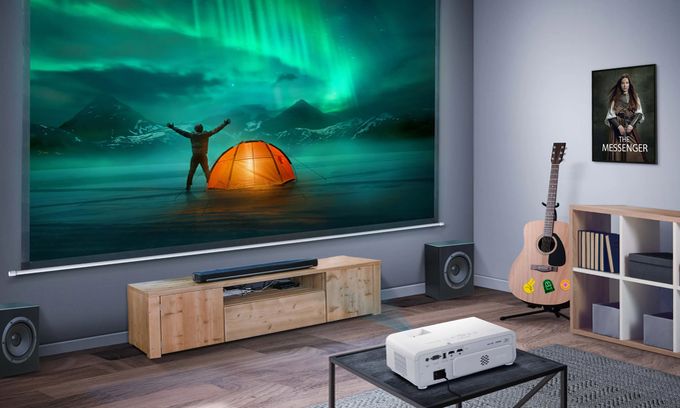Projectors are experiencing unprecedented growth in popularity as a relatively inexpensive alternative to big-screen TVs. To be fair, their manufacturers are also not wasting any time, constantly reducing prices on 100″ and larger TVs.
Huge TVs
Today, the list of relatively affordable models includes TCL 98S550G / 98X955 / 98QM850G, Samsung 98Q80C, Hisense 100U76N, etc.
Prices for 100″ TVs:
– Sony XR98X90L ~ $ 8,000;
– TCL QM8 (QLED + Mini LED TV, Google TV) ~ $ 6,200;
– Samsung 98Q80C (2023) ~ $ 6,000;
– TCL 98S550G ~ $ 5,000;
– Samsung UN98DU9000 (2024) ~ $ 3,500;
– Hisense 100U76N (QLED, Google TV, 2024) ~ $ 2,500.
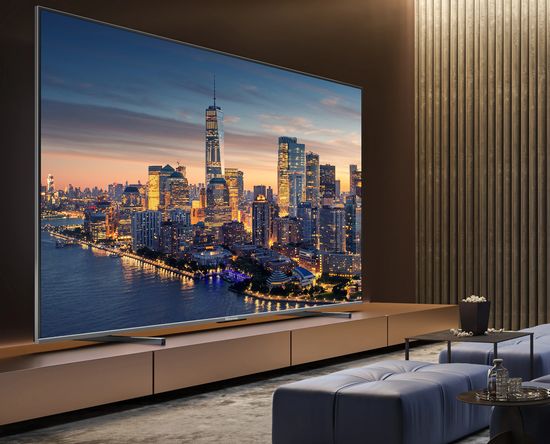
Of course, LG also offers huge models, but they are too expensive for now. For example, the price of a 97″ LG OLED Evo G4 reaches ~ $ 25,000, the LG 97M39LA costs ~ € 22,000.
But prices are mainly reduced in the budget and mid-budget segments, whose models at best use quantum dot technology, but without mini LED backlight. But the success of companies in reducing prices is impressive.
Until recently, the projectors image quality was significantly lower due to lower brightness, contrast and resolution. The reasons are obvious. In particular, when watching TV, the eyes perceive direct radiation. The projector light flux is reflected from the screen, significantly losing brightness.
As known, contrast is the ratio of max white to black. Accordingly, the projector contrast is also lower. In fairness, LCoS (liquid crystal on silicon) projectors also provide superb contrast due to ideal black, but their price starts from $ 5,000.
Resolution limitation, for example, DLP projectors is due to the complexity of placing micromirrors in a very small volume, each of which is a pixel analogue. For example, a Full HD 1080p (1,920 x 1,080) image is formed using 2 million micromirrors, 4K UHD (3,840 x 2,160) requires an increase in their number to 8 million.
ALPD technology
Replacing lamps to solid-state light engine with semiconductor diodes (LEDs) or laser diodes was the significant advance in projector improvement. For reference, a laser diode uses an optical resonator, providing more powerful coherent radiation.
LED models are cheap and reliable, but low-power. They are actively used in inexpensive low-power portable mini projectors. However, in recent years, companies have successfully solved this problem. For example, gaming BenQ X3000i uses 4LED light source (RGBB), including traditional 3LED and an additional blue LED, which boosts overall brightness. XGIMI Horizon Ultra 4K projector uses a hybrid Dual Light (3LED + laser) RGBB with an additional red laser to enhance the brightness and saturation of the red.
But most modern projectors use Advanced Laser Phosphor Display (ALPD) technology by Chinese Appotronics. The ALPD 3.0-based laser-phosphor light engine uses laser-excited fluorescent materials and mixed multi-color laser lines to form a high-quality image. They provide a wider color gamut, are significantly more powerful and, accordingly, brighter, but more expensive. Increasing brightness with unchanged black depth increases the overall contrast of the image.
Three-laser ALPD 4.0 – based projectors are even more powerful and cover more than 106% of the BT.2020 color space, but their image may have speckles due to interference. Last year, the company introduced the fifth version, successfully implementing it in Dangbei X5 Ultra.
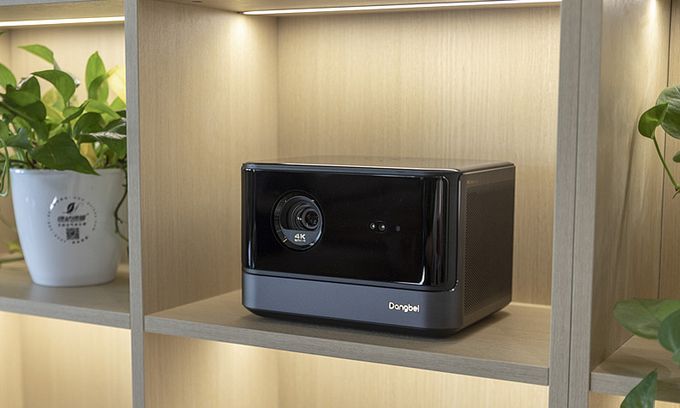
The model uses three laser colors and three LED colors, providing unprecedented 120% (Rec.2020), 165% (DCI-P3) and 210% (Rec.709) color gamut.
XPR technology
The development by the American Texas Instruments (TI) of pixel shift-based Xpanded Pixel Resolution (XPR) technology for Digital Micromirror Device (DMD) DLP chipset became the second breakthrough.
In fact, the projector divides 8 million pixels of 4K content into two or four parts (2- or 4-phase pixel shift). Then, the 2 million micromirrors of the relatively cheap 1080p chipset sequentially display two or four 1080p images, shifting them half a pixel relative to each other.
Of course, the projector displays only one 1080p image at any time. But due to the high frequency, the vision and brain perceive them as one picture with a higher resolution. The pixel shift is carried out by tilting the lens using 4 XPR module magnets.
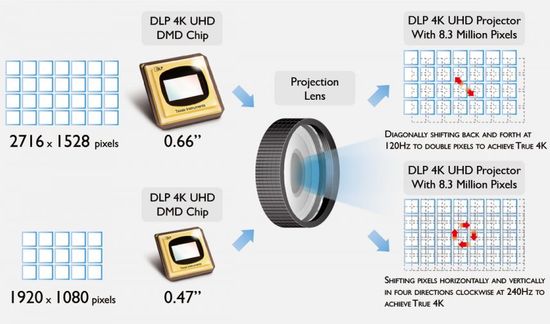
The successful development of ultra-short throw (UST) projectors was the next breakthrough. Using complex aspherical mirrors, these models form an image from a distance of several tens of inches. As a result, placing them near the screen eliminates the problem of wires on the floor.
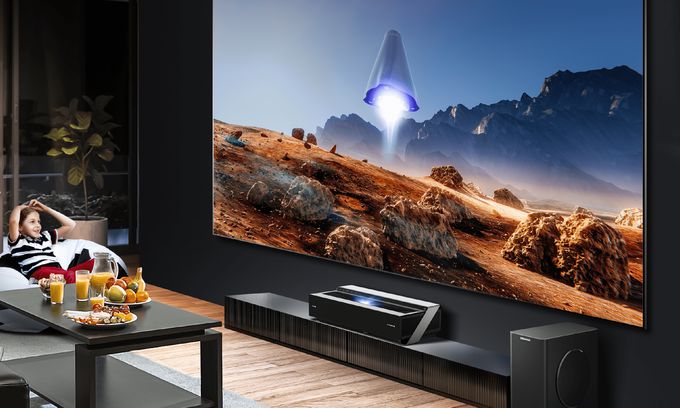
Owners of mid-focal projectors are forced to endure this inconvenience or use a complex ceiling mount.
Finally, wireless technology and smart options provided streaming, eliminating the content problem for projectors.
Due to their rapid growth in popularity as an alternative to TV, some sellers even began to use the name ‘laser TV’. It will probably cause a skeptical smile from a physicist. But formally, any projector with a built-in TV receiver can be classified as a TV with a screen outside the case. However, most companies prefer the traditional name ‘UST projector’.
BenQ projectors
Taiwanese BenQ is one of the industry leaders. In the summer it introduced two new 4K laser DLP projectors, including the mid-focal TK710 (100″@2.9m, $ 1,800) and short throw TK710STi (100″@2.2m, $ 2,000). Other model specs are identical.
Like all new BenQ models, the TK710 provides unprecedentedly low input lag (4K@60Hz – 16.67ms, 1080p@60Hz / 120Hz / 240Hz – 16.7ms / 8.3ms / 4.2ms, respectively). In addition, it offers BenQ’s FPS and RPG gaming submodes with different grayscale presets.
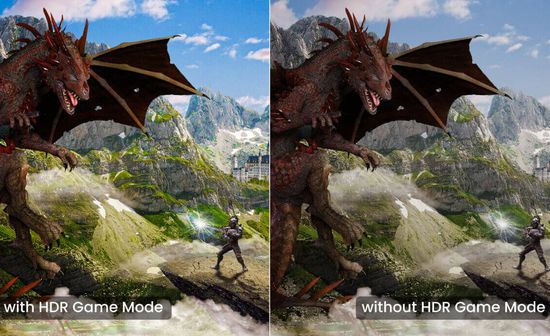
In fact, they optimize the visual settings for games. Therefore, the company positions it as a gaming projector.
However, 4K resolution, 3,200 ANSI Lumens (ANSI IT7.228 standard) and dinamic contrast ratio of 600,000:1 fully meet the criteria of Home Theater model.
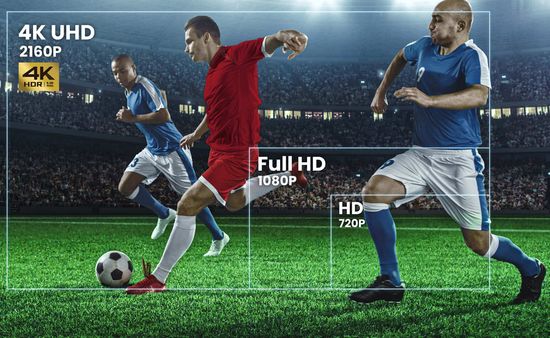
Moreover, the brightness is sufficient to compensate for ambient light. Even in daylight, the projector delivers rich, vibrant colors without additional darkening.

Unlike the previous BenQ TK700STi ($ 1,650, 3,000 ANSI Lumens, 2021) with 240W Metal Halide bulb, the new model uses ALPD 3.0 – based (Advanced Laser Phosphor Display technology) Laser Phosphor light engine, providing 3,200 ANSI Lumens. The TK710TSi is also significantly brighter than the gaming BenQ X300G with LED light sourse, which was introduced in January. It provides only 2,000 ANSI Lumens and costs almost $ 1,800.
TK710STi is HDR compatible and has color gamut ~ 95% in Rec.709 color space. Unfortunately, the traditional lack of support for Wide Color Gamut limits color fidelity.
With (0.69:1 – 0.83:1) throw ratio, short throw TK710STi delivers (30″ – 150″) diagonal screen size from (0.5 m – 4.6 m) distance.
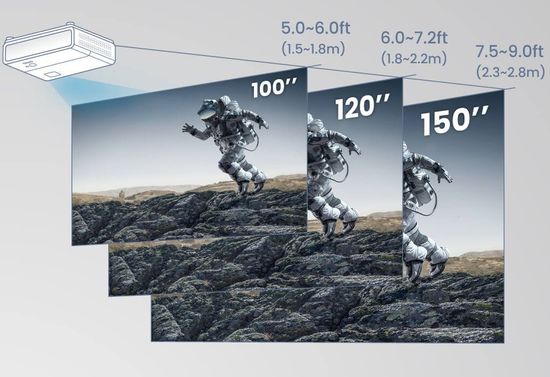
The HDMI 2.0b ports supports 4K@60Hz / 1080p@120Hz and are compatible with PS5, PS4, Nintendo Switch, and Xbox Series X consoles.
Key Features
The price ($ 1,800 vs $ 2,000), (1.15-1.5) throw ratio / 1.3x zoom vs (0.69-0.83) / 1.2x zoom are the only differences between mid-focal TK710 and short-throw TK710STi. They provide 100″@2.88m vs 100″@1.67m. In fact, both models have the traditional problem with wires on the floor. In addition, TK710STi comes with a built-in Android TV dongle that provides direct access to popular streaming services, including Netflix, Disney Plus, Max, Prime, YouTube, etc. The TK710 requires an additional streaming device, such as a Chromecast or Apple TV 4K.
For easy installation, the model offers the vertical lens shift of ±10% and Keystone Adjustment (Vertical / Horizontal ±30° and rotation ±30°). Unfortunately Corner Fit is not available.
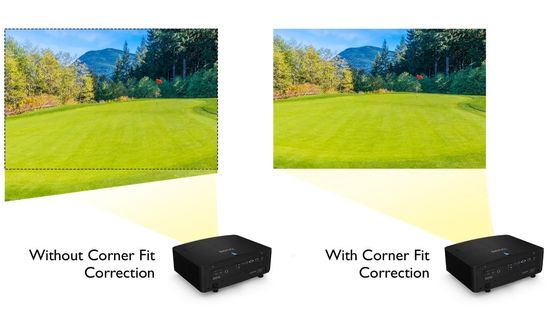
The 5.0W internal speaker is unlikely to suit music lovers, but the projector offers an eARC connector for transmitting Dolby Atmos and 7.1ch audio in digital format to an external soundbar.
Competitors
– last year’s Optoma UHZ66 DLP ~$ 2,000, Laser Phosphor light engine, up to 4,000 ANSI Lumens of brightness, superb input lag of 4K@60Hz – 16.9ms, 1080p@60Hz/120Hz/240Hz – 17ms / 8.6ms / 4.4ms, respectively;
– ViewSonic LX700-4K (2024) ~$ 1,600, 3,500 ANSI Lumens with Laser Phosphor light source, gameplay optimization for 1440p@120Hz, 3,000,000:1 dynamic contrast ratio and 4.2ms rapid-fire input with an up to 240Hz refresh rate;
– Dangbei DBOX02 Mars Pro ~$ 1,900, 2,450 ISO Lumens (ISO 21118 standard) or 2,340 ANSI lumens (1 ANSI lumens ~ 1,045 ISO lumens), Laser Phosphor light source, input lag is worse. But DBOX02 uses the innovative InstaPro AI image setup (combination of dToF, CMOS, and AI algorithms), has 2 x 12W speakers (Dolby Audio and DTS) and, most importantly, comes with licensed Netflix. In fact, this is the first model with this option.
Conclusion
BenQ has created another very good DLP 4K HDR projector. Versatility is one of its main pros. 3,200 ANSI Lumens brightness with ALPD 3.0 – based Laser Phosphor light engine, 4K (3,840 x 2,160) resolution with pixel shift – based DMD XPR chipset, dynamic contrast of 600,000:1, Full HD 3D support, an eARC connector and a built-in Android TV dongle in TK710STi meet the premium Home Theater classification. The model provides high-quality images up to 150″ diagonally when viewing video content even in daylight without additional dimming. Ultra low input lag (1080p@60Hz/120Hz/240Hz – 17ms / 8.6ms / 4.4ms) and BenQ’s gaming submodes will appeal to gamers.
Of course, the market offers many other superb models, but BenQ TK 710 / 710STi look quite decent against their background. It’s slightly cheaper than Optoma UHZ66 and brighter compared to Dangbei DBOX02 Mars Pro. However, ViewSonic LX700-4K offers 3,000,000:1 dynamic contrast and gameplay optimization for 1440p@120Hz at a price of ~ $ 1,600. For sure, it can be positioned as the main competitor. But in principle, a good price-quality ratio due to high specs and gaming options should provide the model with cloudless marketing prospects.
This video demonstrates the BenQ TK 710/710STi.
